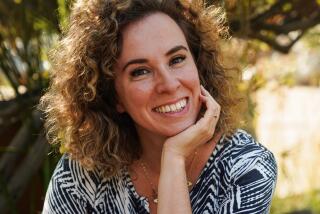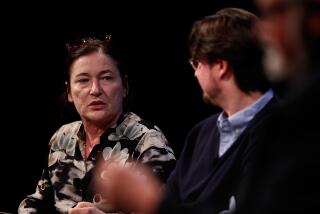A new biography gets Oriana Fallaci the way people who knew her couldn’t
The journalist, novelist and irascible force of nature known as Oriana Fallaci never wanted her life story to be written. “I have never authorized, nor will I ever authorize, a biography,” she once told an enquiring academic. That didn’t stop at least one contender, the American scholar Santo L. Aricò, who even managed to obtain his subject’s cooperation for 1998’s “Oriana Fallaci: The Woman and the Myth.” Yet Fallaci maintained an iron grip on the project, constantly finessing what the dogged author called “her official image.” Not exactly the recipe for a living likeness, let alone the sort of three-dimensional portraiture that was Fallaci’s stock-in-trade as an interviewer.
In some ways, Cristina de Stefano has had an easier task with “Oriana Fallaci: The Journalist, the Agitator, the Legend.” Unlike Aricò, who conducted several interviews with his subject before her death from cancer in 2006, De Stefano never met Fallaci. Nor did she have to contend with Fallaci’s obstructive behavior and truly fearsome temper. (Hearing Fallaci scream at somebody else on the telephone, as I did more than once while translating her novel “Inshallah,” made me want to take three Advil and lie in a dark room.) The subject’s absence turns out to be a kind of blessing, leaving the author a free hand to recount what is, by any measure, a fascinating and utterly sui generis life.
Fallaci was born in Florence, in 1929, to an indomitable mother and a penniless, Proust-loving father, who made his living as a woodcarver. Disappointed that the first of his offspring was a girl, Edoardo Fallaci taught her to shoot, hunt and absorb physical pain without complaint. All of this would come in handy soon enough. In 1943, after the fall of Mussolini, the Germans occupied northern Italy. Edoardo joined the Partisans — and so did his 13-year-old daughter, who conveyed leaflets, messages and supplies on her bicycle. The experience shaped her personality and her politics alike. It marked her, she would later recount, just as the “Pentecost left its mark upon the apostles.”
After the war, she gravitated toward journalism, with the encouragement of her Uncle Bruno, who worked at “La Nazione.” A tiny teenager in flats, she was initially dismissed as “the kid” by her Florentine colleagues. But Fallaci was a tough, precocious talent. She worked her way up the ranks, and by the early ’50s, she was writing for “L’Europeo,” which sent her to Hollywood for a month in 1957.
Fallaci’s initial collision with America, where she would spend much of the second half of her life, was fortuitous in all sorts of ways. It exposed her to a wider world and taught her that celebrities were often hollow shells: Potemkin Village personalities. It also seemed to crystallize her peculiar mixture of vulnerability and high-decibel truculence. “She was fragile,” recalled one companion, “but she used aggressiveness as a shield. She attacked first. As a result, Americans were often terrified of her.”
And not only Americans. By the late ’50s, she had begun to turn what Orson Welles called her “sharp, Tuscan eye” on the rest of the world. First, “L’Europeo” sent her on a proto-feminist tour of Turkey, Pakistan, India, Malaysia, Hong Kong and Japan. Always attuned to the paradoxes of progress, she wrote about her encounters with “Muslim women who no longer wear the veil and are respected and free, but also unhappy, just as we are in the West.” She published this reportage as a book, “The Useless Sex,” in 1961, and followed up the next year with “Penelope at War,” a thinly fictionalized novel about her turbulent love life. But before she could be pigeonholed as an anatomist of the nascent gender wars, Fallaci changed tack and spent almost a year reporting on the U.S. space program. Then she headed for Vietnam.
Her entire life was a war on the party line, the politically expedient, the prefabricated opinion, and she never stopped fighting, at least not on the page.
Fallaci was herself a celebrity by then, and perhaps that made her uneasy. Plunging into a combat zone took her back to the fundamentals she had absorbed in 1943 and reignited her contempt for hypocrisy, which made her wary of both the Americans and the Viet Cong. In her final dispatch from the conflict, written as the North Vietnamese marched into Saigon, she anticipated both the victory and its aftermath of Stalinist rule and reeducation camps: “The Communists are splendid while they fight, and intolerable once they have won.”
While she continued to function as a war correspondent, Fallaci found another way to vent her rage at the abuse of power: the interview. There is a wonderful irony here. Having cut her teeth interrogating the merely famous, she upgraded to the high, the mighty, the Shakespearean movers-and-shakers. They were mostly men, and they were mostly intimidated by this wily, theatrical, fearless woman with a microphone. “To what degree does power fascinate you?” she asked Henry Kissinger. (The answer, predictably and unconvincingly, was not at all.) Talking with the Ayatollah Khomeini in 1979, she responded to a jeering comment about her respectability by ripping off her chador: “I’m going to take off this stupid, medieval rag right now. There. Done.” (Khomeini fled the room at once.)
Many of these interviews were collected in “Interview With History,” which I suspect will outlast much of Fallaci’s output. The conversations are sharp, informed, often entertaining: They are two-part inventions in which the interviewer is a major presence, a player. In that sense, they may have helped to shape our contemporary media landscape, with its preference for the shouting match or polemical dunk tank.
What followed was less inspiring. Fallaci spent almost a decade on “Inshallah,” a giant novel about the war in Lebanon, which exposed her weakness for melodrama and metaphysical kitsch. She deserves some credit, as De Stefano argues, for predicting that “radical Islam [would] expand beyond the Middle Eastern arena and confront the West in a much wider war.” But her disdain for the faith, fed initially by its oppression of women, got the better of her. The Muslim characters in “Inshallah” are queasy-making cartoons: killers, traitors, homosexuals (always a black mark in Fallaci’s book). And a decade later, after the Sept. 11 attacks, she published a Muslim-hating polemic, “The Rage and the Pride,” whose hyperventilating scorn made it, in the words of Christopher Hitchens, a “sort of primer in how not to write about Islam.”
De Stefano, who has filled in some important biographical gaps, is less reliable as a critic of Fallaci’s work. She seems not to recognize that these final productions, with their depressing quotient of egotism and Islamophobia, ended Fallaci’s career on a low note. As it happens, they also made this lifelong anti-fascist into a hero of the right — an irony that may have tickled her, if she dwelled on it at all. But her entire life was a war on the party line, the politically expedient, the prefabricated opinion, and she never stopped fighting, at least not on the page. Blame it on Uncle Bruno, perhaps, who drilled his main journalistic precept into Fallaci’s head as a child: “First of all, don’t bore the reader!” Early and late, she almost never did.
Marcus is the editor of Harper’s Magazine and the translator of seven books from the Italian, the most recent being Giacomo Casanova’s “The Duel.”
“Oriana Fallaci: The Journalist, the Agitator, the Legend”
Cristina de Stefano, translated by Marina Harss
Other Press: 288 pp., $25.95
More to Read
Sign up for our Book Club newsletter
Get the latest news, events and more from the Los Angeles Times Book Club, and help us get L.A. reading and talking.
You may occasionally receive promotional content from the Los Angeles Times.






